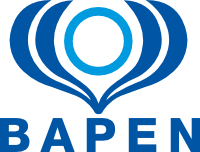Outcome of Multidisciplinary Nutrition Team rounds on Parenteral Nutrition appropriateness in Adult patients at a large district general hospital in East of England
Team Leader
- Dr Susan Catnach. Nutrition Team Lead. Consultant Gastroenterologist.
Email susan.catnach@whht.nhs.uk
Team Members
- Sital Sanghvi (Author) – Pharmacy Team Leader, Critical Care & Nutrition
Email: sital.sanghvi@whht.nhs.uk
In Alphabetical order:
- Vivienne Robson – Senior Dietitian, Critical Care & Nutrition
- Jill Wallis – Nutrition Nurse Specialist (Team Co-ordinator)
- Dr Katerina Wallis – Consultant Gastroenterologist
Acknowledgements: Martin Keble (Chief Pharmacist), Lindsay Smith (Deputy Chief Pharmacist), Smita Ganatra (Chief Dietitian), Dr Colin Johnston (Medical Director) and Tracy Moran (Deputy Director, Nursing)
What was the problem you were trying to address?
Parenteral Nutrition (PN) usage data in the Trust, prior to the initiation of the nutrition team showed that a substantial proportionate of the adult patients received PN for 2-3 days. This duration signified inappropriate usage.
The aim of the project was to Assess the effect of Multidisciplinary Nutrition team rounds on 1) Promoting appropriate prescribing of Parenteral Nutrition (PN) in adult patients and 2) on PN expenditure between April 2011-March 2012.
How did you create your project plan?
- Once weekly team meetings – led to initiation of Multidisciplinary nutrition team ward rounds (MDT)
- Networking with the UKCPA and NNNG forum
Key Actions
- Removal of all stock parenteral nutrition
- Introducing and implementing Parenteral Nutrition referral forms
- Raising nutritional team awareness: Email from medical director to all consultants and intranet users, Presentations at the surgical and medical clinical governess sessions, Training sessions
- Restrict out of hours PN dispensing – Pharmacy do not generally dispense PN out of hours and weekends as a rule. This was supported by the Medical Director and Chief Pharmacist.
- ALL patients referred were assessed for appropriateness for PN by the Nutrition Team
- Setting up of a Nutrition Database – holds information on all patients referred for PN, including reasons for declining PN requests, line types, fluid status, ongoing monitoring for PN and reason for discontinuation of PN
- Patient Information Leaflet for PN
- Developing an autonomous MDT- from PICC line insertion to prescribing:
- nutrition nurse specialist trained to insert PICC lines,
- pharmacist independent prescriber for PN, fluids, electrolytes, vitamins( including pabrinex, thiamine), stress ulcer prophylaxis, prokinetics, glutamine, loperamide, codeine phosphate and laxatives,
- dietitian recommendations on PN, fluid and glutamine requirements.
- Audits – Monthly and annual PN usage and expenditure
Main Outcomes
- There were 121 patient requests for PN from April 2011 to March 2012. PN was considered appropriate in 56 of these patients’ requests (46%). The reasons for declining PN included:
- Patients having viable enteral access (28 %),
- patients had adequate nutritional status and enteral access was anticipated within 5 days (21%) and
- no anticipated benefit to clinical outcome/quality of life or not in the patient’s best interest (5%)
- There has been a 52% decrease in the usage and expenditure for April 2011 –March 2012 compared to an average of the previous 4 years, showing a cost saving of £44,572.89. The nutrition team was established in January 2011.
| Year | Quantity/Usage | Expenditure | Average annual expenditure Apr 07 – Mar 11 |
|---|---|---|---|
| Apr 07 – Mar 08 | 1210 | £80,444.66 | £85,904.87 |
| Apr 07 – Mar 09 | 1359 | £76,220.15 | |
| Apr 09 – Mar 10 | 1691 | £98,018.31 | |
| Apr 10 – Mar 11 | 1598 | £88,936.37 | |
| Apr 11 – Mar 12 (MDT rounds) | 731 | £41,331.98 |
- The round is an effective initiative in stopping the use of inappropriate PN as well as instigating switch to enteral feeding when clinically indicated.
- The rounds also led to a significant reduction of 75% in weekend requests, reducing the prescribing of inappropriate regimens for patients and increasing patient safety.
- Feedback from clinical teams has shown this to be a positive educational experience.
How are you going to maintain the improvement?
- Having a strong presence within the Trust so that the team is seen as essential by all specialities. See patients quickly (within 24 hours Monday – Friday and on Monday mornings for weekend referrals) and take responsibility for prescribing PN and monitoring its outcome.
- Education and Training of doctors, nurses, pharmacists, dieticians and patients
- Nutrition Steering Committee –Trust policies on nutritional issues, Governance , Risk Management
- Ongoing Continuous Professional Development within the Nutrition Team
- Networking – AneTT, UKCPA, BPNG, NNNG, BAPEN, BDA, PENG
- Future audits on patient outcomes including length of stay
Tips for others planning similar projects
What worked well for us:
- Nutrition Nurse specialist – central to the team, co-ordinates and maintains MDT rounds and patient Database
- Multidisciplinary nutrition team ward rounds – at present quite a few DGHs do not have nutrition teams even post the NCEPOD- a mixed bag (2010) report. This was evident at a recent BPNG study day
- Rapport within the team and with other specialties
- Support from Strategic level – Medical Director, Chief pharmacist, Nursing Director
- Keeping careful records (Nutrition Database) –justified in terms of improved quality of care and cost savings
Things we might do differently:
- Overlooked issues around prescribing PN- should have taken into account the logistics of a round without a non medical prescriber. This was later resolved.
Top Quotes
“The investment in the Nutrition Team has more than paid for itself” – Director of Finance
“You are always there when we need support” – Critical Care Team
“one-stop shop” – Patient


